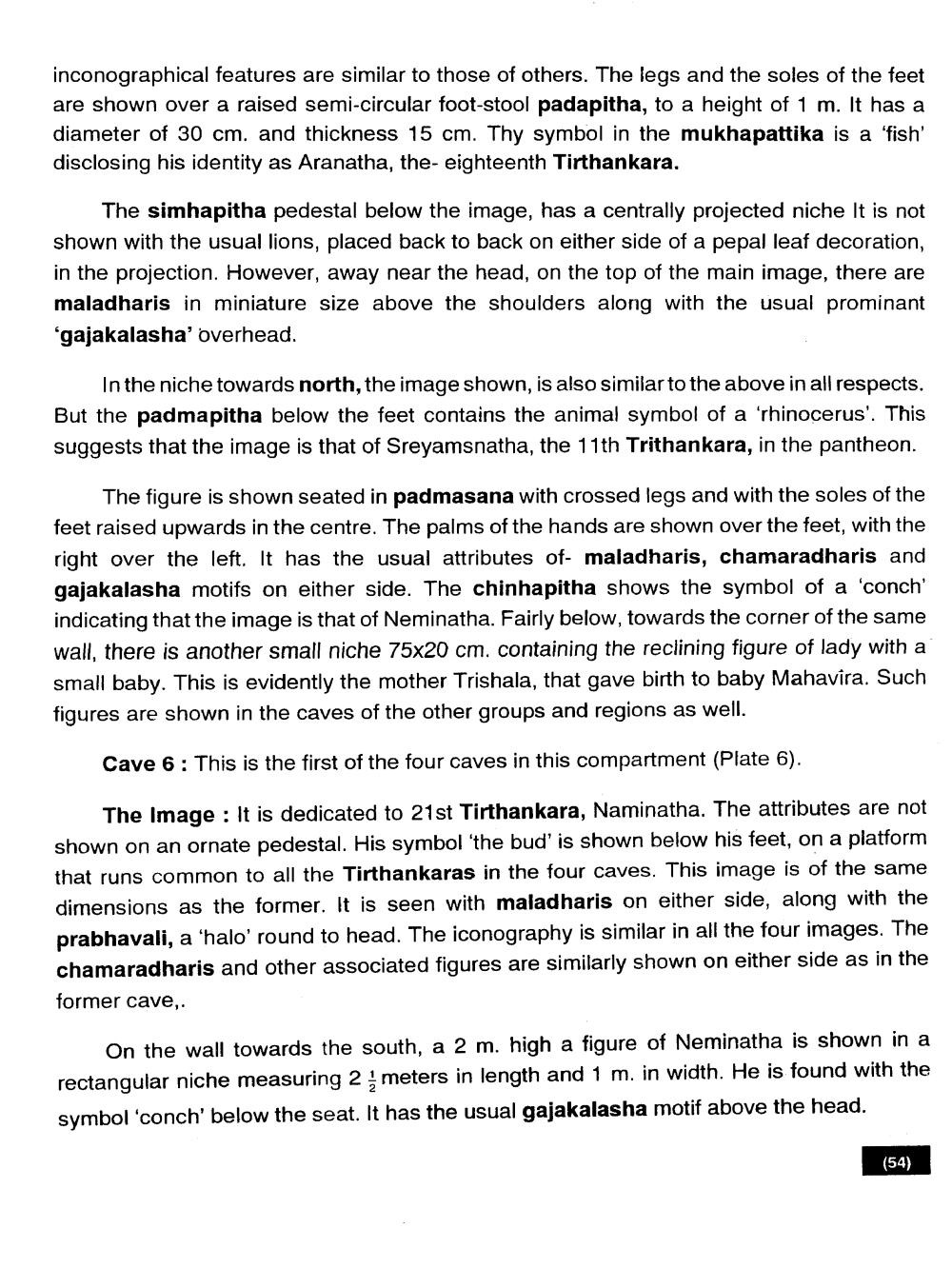________________
inconographical features are similar to those of others. The legs and the soles of the feet are shown over a raised semi-circular foot-stool padapitha, to a height of 1 m. It has a diameter of 30 cm. and thickness 15 cm. Thy symbol in the mukhapattika is a 'fish' disclosing his identity as Aranatha, the-eighteenth Tirthankara.
The simhapitha pedestal below the image, has a centrally projected niche It is not shown with the usual lions, placed back to back on either side of a pepal leaf decoration, in the projection. However, away near the head, on the top of the main image, there are maladharis in miniature size above the shoulders along with the usual prominant ‘gajakalasha' overhead.
In the niche towards north, the image shown, is also similar to the above in all respects. But the padmapitha below the feet contains the animal symbol of a 'rhinocerus'. This suggests that the image is that of Sreyamsnatha, the 11th Trithankara, in the pantheon.
The figure is shown seated in padmasana with crossed legs and with the soles of the feet raised upwards in the centre. The palms of the hands are shown over the feet, with the right over the left. It has the usual attributes of- maladharis, chamaradharis and gajakalasha motifs on either side. The chinhapitha shows the symbol of a 'conch' indicating that the image is that of Neminatha. Fairly below, towards the corner of the same wall, there is another small niche 75x20 cm. containing the reclining figure of lady with a small baby. This is evidently the mother Trishala, that gave birth to baby Mahavira. Such figures are shown in the caves of the other groups and regions as well.
Cave 6 : This is the first of the four caves in this compartment (Plate 6).
The Image : It is dedicated to 21st Tirthankara, Naminatha. The attributes are not shown on an ornate pedestal. His symbol 'the bud' is shown below his feet, on a platform that runs common to all the Tirthankaras in the four caves. This image is of the same dimensions as the former. It is seen with maladharis on either side, along with the prabhavali, a 'halo' round to head. The iconography is similar in all the four images. The chamaradharis and other associated figures are similarly shown on either side as in the former cave,
On the wall towards the south, a 2 m. high a figure of Neminatha is shown in a rectangular niche measuring 2 meters in length and 1 m. in width. He is found with the symbol 'conch' below the seat. It has the usual gajakalasha motif above the head.
(54)




